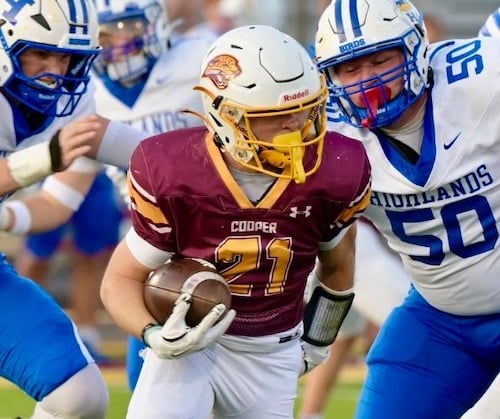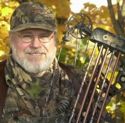GOLDEN POND — A drive through the Elk and Bison Prairie in Land Between the Lakes (LBL) takes visitors back in time to pre-settlement Kentucky, when six million acres of grasslands, herds of wild ruminants, and periodic fires created a unique landscape which is now absent from most of the state.
“Native people used fire to keep the prairie open, but we had to clear this land, and thin back the trees,” said Curtis Fowler, a U.S. Forest Service employee on the wildlife staff and manager of the 700-acre prairie demonstration area. “There was fescue and lespedeza, and a lot of exotics (plants) we’ve had to deal with.”
The Elk and Bison Prairie is just north and east of the intersection of U.S. 68 and The Trace, the north-south highway which traverses the 175,000 acre national recreation area between Kentucky Lake and Lake Barkley.
It took 10 years to transform an old farmstead back to what the land looked like around 1790, but managers admit it’s a work in progress. “There were remnants of some native grasses here, but we had to plant a lot.”

Indian Grass, Big Bluestem and other native grasses are planted periodically, their seeds drilled into the soil. It can take three years for the grasses to show up (above the ground) because they build their root system first.
The ongoing habitat management includes applications of herbicides and prescribed burns, which are probably most important to maintaing the prairie, an annual battle against plant succession.
“Our prairie is on a two-year burn rotation,” said Fowler. “Every year we burn half the prairie. That helps promote the native grasses and keeps the woods open.”
Fire exposes bare ground, helps native grass seeds germinate, and destroys plants (shrubs, hardwood saplings and weeds) that compete with the native grasses for space, nutrients and sunlight.
Between 1996 and 2001, elk and bison were returned to the prairie, to eat grass and naturally fertilize the soil. The animals were fitted with ear tags and implants, so biologists can identify individuals and keep up with their health histories.
“We have 49 elk and 53 buffalo. They are calving now,” said Fowler.
Early and late in the day is the best time observe them, grazing at roadside. These are wild animals and visitors must stay in their vehicles. No one is allowed to walk through the area, and no bicycles or motorcycles are allowed. Vehicles must be enclosed.
Through the years surplus elk are donated to the ongoing restoration projects in the region. The elk are immobilized with tranquilizer darts and moved during cold weather, usually in February, to limit stress. The surplus buffalo are sold at auction in January, to commercial breeders, and those wanting to establish herds.
When visitors drive through the Elk and Bison Prairie they can get a lesson in ecology and natural history. At three interpretive stations, visitors learn about prairie through images on display boards and recorded messages. Periodically, LBL staff conduct guided group tours. Consult the events calendar on their website.
When you drive through the gates you step back into the world that 18th century longhunters saw. The bounty and beauty of the meadows interspersed with hardwood trees makes it easy to see how unique prairie land is, and how easily it was lost when the relationship between plants, animals and humans changed.
Without heavy grazing, disturbance of the soil, and the annual fires, prairie soon reverted to forest. In just a few short decades, by 1820 in Kentucky, prairie was fast becoming a historical footnote.
The Elk and Bison Prairie, in Land Between the Lakes National Recreation Area, is open to visitors year-round, from dawn to dusk. The cost is $5 per vehicle, or .50 per passenger on commercial buses or vans.
Visitors drive on a 3 1/2-mile road that traverses the 700-acre fenced enclosure, and have excellent opportunities to see and photograph wildlife up close.
For information visit their website.
Art Lander Jr. is outdoors editor for KyForward. He is a native Kentuckian, a graduate of Western Kentucky University and a life-long hunter, angler, gardener and nature enthusiast. He has worked as a newspaper columnist, magazine journalist and author and is a former staff writer for Kentucky Afield Magazine, editor of the annual Kentucky Hunting & Trapping Guide and Kentucky Spring Hunting Guide, and co-writer of the Kentucky Afield Outdoors newspaper column.






















